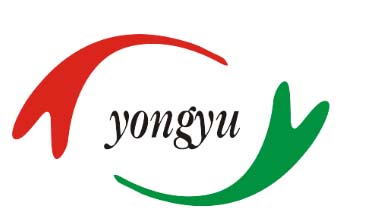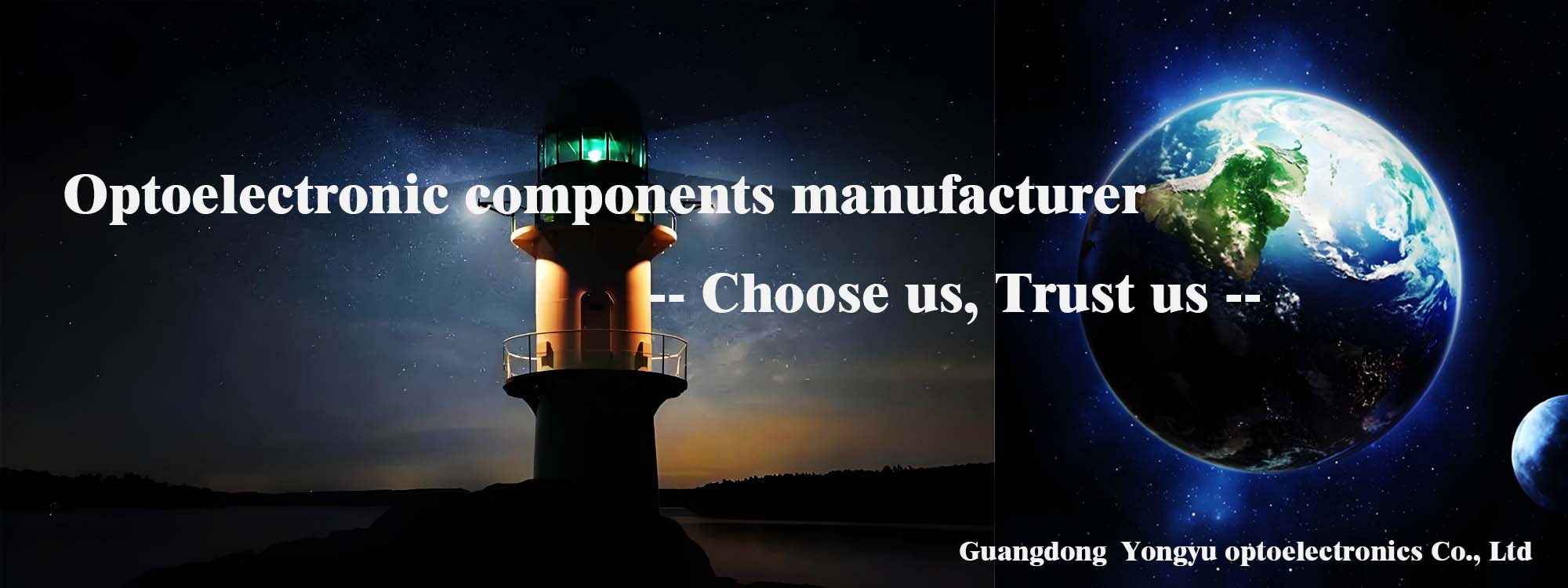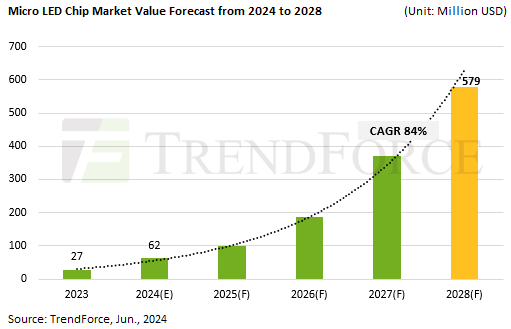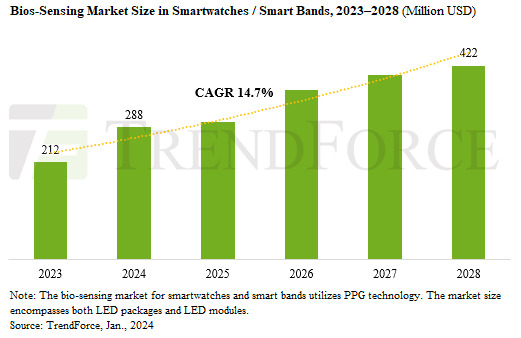According to TrendForce’s latest report “Gold+ Member: Global LED Market Demand and Supply Database and LED Industry Quarterly Update”, the market value of LEDs shrunk to USD 12.608 billion in 2023 due to multiple negative factors such as sluggish end-market demand, slow inventory depletion for LEDs, and fierce price wars.
Entering 2024, the market demand for automotive lighting and displays, lighting (i.e., general, architectural, and agricultural lighting), LED video walls, UV/IR LEDs are likely to recover gradually. Additionally, Micro LED, despite the slower-than-expected development, has been adopted for large-sized displays (Samsung) and smart watches (Tag Heuer), marking a further step towards commercialization. Overall, the LED market value is forecast to grow to USD 13.003 billion in 2024 (+3% YoY). Specifically, the markets of self-emitting Micro/Mini LED displays, UV/IR LEDs, LED video walls, automotive lighting and displays, and agricultural lighting are likely to achieve higher-than-average growth rates.

TrendForce has summarized some highlights for markets and applications with great potential as follows.
Micro LED Applications
Wearables: Indeed, the termination of Micro LED Apple Watch—originally scheduled to be announced in 2026—has caused a severe blow to Micro LED development in the wearable market. Facing such headwinds, few suppliers (e.g., major panel maker AUO) still managed to ship a small amount of products to Tag Heuer. However, their efforts could hardly beat off the challenge facing Micro LED in this sector.
Large-sized Displays: Micro LED large-sized display manufacturing and process yield is hard to attain the original goals, as costs remain persistently high and shipments stagnate at the hundred level. Die shrink is a critical indicator for Micro LED cost reduction. However, as the current market conditions show, the progress of size reduction for large-sized display chips remains uncertain due to chip efficiency, transfer yield, and many other product-related issues, which will also slow down the cost reduction process.
Automotive Displays: When incorporated into flexible, curved, integrated automotive display solutions featuring haptic feedback for smart cockpits, Micro LED is able to fully enhance drivers’ user experience thanks to its characteristics of high brightness, high contrast, wide color gamut, and fast response. As TrendForce’s investigations reveal, European car makers are likely to adopt Micro LED displays for reading lights/knob buttons, while European, the US, and Japanese automakers plan to adopt Micro LED transparent displays. The investigations also confirm that Micro LED HUDs must come with a transmittance rate of ≥70% and a curved screen. With the increasing maturity of relevant technologies and more stable price products, Micro LED transparent displays will enter the automotive market in 2026-2027, serving as an AR-HUD or window display.
Mini LED Video Walls
According to TrendForce, the market demand for Mini LED (COB) video walls has grown rapidly, with leading manufacturers being Samsung, LG Electronics, Leyard, Unilumin, and Absen.
Automotive Lighting and Displays
In 2024, the growth of NEV shipments is expected to slightly drive up the global sales of passenger cars and box trucks by 2-3%. With the development of ADB headlights, Mini LED taillights, full-width taillights, (intelligent) ambient lights, Mini LED-backlit displays, and other advanced technologies, price competition within the automotive market will further intensify, affecting the prices of automotive LED products. The market size of automotive LEDs is estimated to inch up to USD 3.445 billion in 2024.
UV LED
In response to the market demand for high-power disinfection, UV-C LED manufacturers constantly unveil single-chip high power products (≥80mW) and integrated UV-C COB LED packages, which are likely being introduced to home appliance and flowing water disinfection applications in 2H24-2026. Moreover, the Huawei-affiliated EV brand AITO is scheduled to adopt UV-C LED air disinfection, with which orders are placed between 2023 and 2025. This act could prompt other car makers to implement automotive air disinfection. In the long run, UV LEDs, compared to UV lamps, have a longer lifetime and simpler optical design. Nichia, Seoul Viosys, Violumas, and UVT have rolled out complete UV-A/B/C LED product lines, aiming to meet the need of customers intending to replace UV lamps through solutions with a wide range of wavelength options.
Agricultural Lighting
In 2024, the Central and Eastern European markets (Czech Republic and Poland) are likely to experience a decline in the prices of horticultural lighting (finished) products and provide a higher return on investment (ROI) for plant factory solutions on average, thereby showing stronger demand. Moreover, regions at high latitude in Asia and Northern European countries are investing in horticultural lighting for the cultivation of vegetables, fruits, and forage crops, aiming to mitigate the adverse impact from long winters on food supply chains. The said factors are likely to drive up the market value of horticultural lighting LEDs.
 Chinese
Chinese English
English



